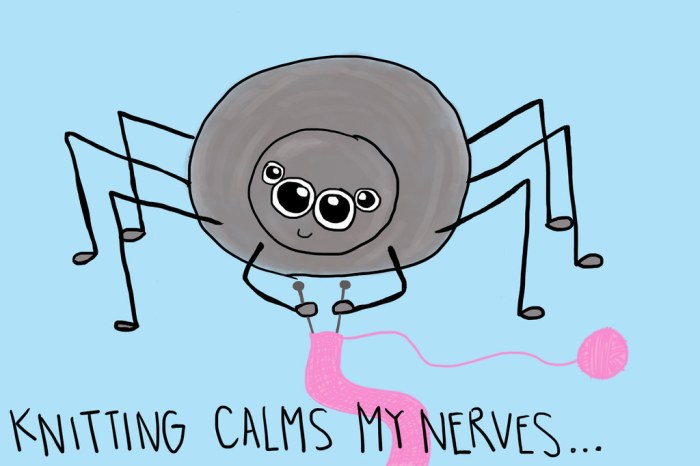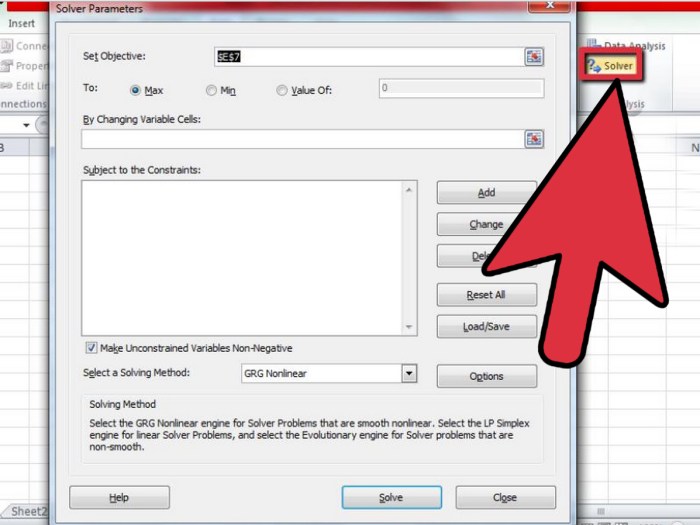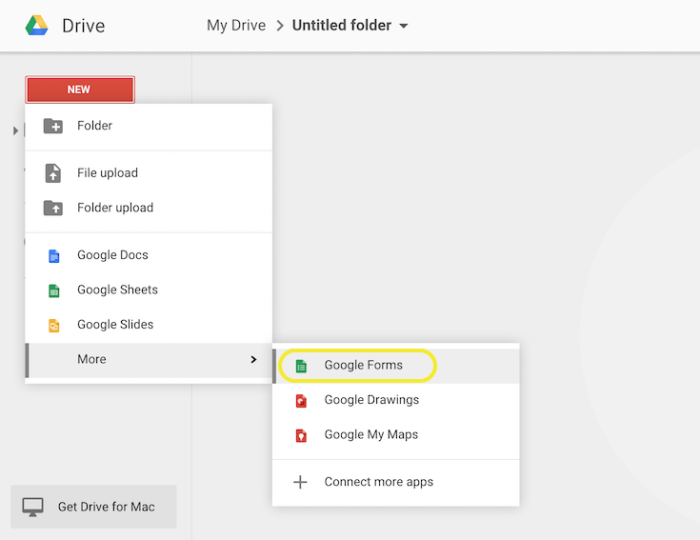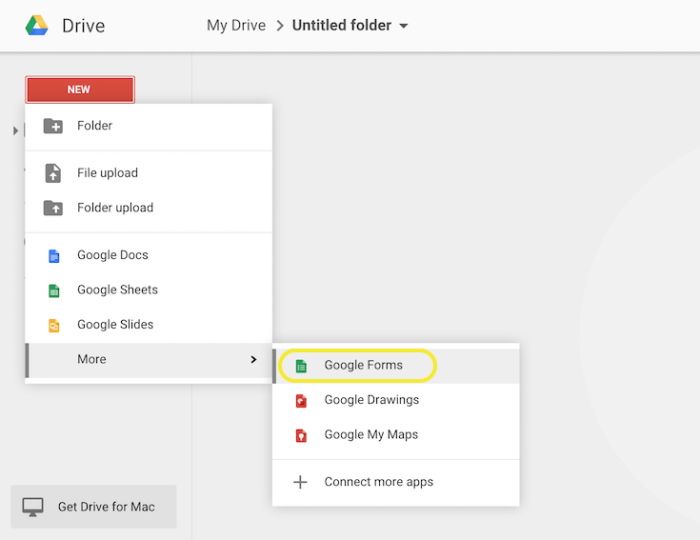Overcome the Fear of Spiders: This comprehensive guide delves into the world of arachnophobia, exploring its origins, triggers, and most importantly, how to overcome it. We’ll examine the different levels of fear responses, from mild discomfort to intense panic, and compare them to other phobias. Furthermore, we’ll uncover common misconceptions about spiders and their behavior, and address the potential physical and emotional consequences of this fear.
The journey to conquering spider-related anxieties begins with understanding the roots of your fear. This includes recognizing triggers, understanding the science behind the fear, and then working through strategies like cognitive behavioral therapy (CBT) and exposure therapy. We will also explore effective relaxation techniques and the importance of support systems, providing you with practical tools and actionable steps to regain control.
Understanding the Fear of Spiders
Arachnophobia, the fear of spiders, is a common phobia affecting millions worldwide. It’s more than just a mild aversion; it can significantly impact a person’s daily life, causing distress and avoidance behaviors. Understanding the origins, triggers, and different levels of this fear is crucial for those struggling with it and those seeking to support them.Arachnophobia, like many phobias, is a complex phenomenon with roots often stemming from a combination of genetic predisposition, learned experiences, and cultural influences.
Early childhood experiences, particularly traumatic encounters with spiders, can create a strong association that leads to a persistent fear. Furthermore, societal influences, such as media portrayals of spiders as dangerous creatures, can contribute to the development and maintenance of arachnophobia.
Origins and Triggers of Arachnophobia
The development of arachnophobia often involves a combination of genetic vulnerability and learned experiences. Some individuals might inherit a predisposition to anxiety or fear responses, making them more susceptible to developing a phobia. Crucially, negative encounters with spiders, whether real or imagined, can create a strong conditioned response. This conditioning involves associating the spider with a frightening or painful experience, which subsequently triggers a fear response.
Furthermore, cultural narratives and media portrayals of spiders as menacing creatures can contribute to the formation of arachnophobia. Exposure to these negative representations, especially during formative years, can solidify the fear.
Levels of Fear Response
The intensity of the fear response varies greatly among individuals. Mild discomfort might involve a slight feeling of unease or a desire to avoid spiders. However, for others, the fear escalates to intense panic, leading to physical symptoms like rapid heartbeat, shortness of breath, sweating, and trembling. These responses can range from subtle anxiety to a debilitating terror.
The severity of the fear response is highly individual and depends on the individual’s personal history and experiences.
Conquering the fear of spiders can be tough, but sometimes a surprising connection can help. For example, listening to the insightful conversation between Lower Dens, Jana Hunter, and Perfume Genius on the Talkhouse podcast, about gender, vaping, and touring, might actually give you a new perspective on overcoming phobias. Ultimately, though, understanding and facing your fears is key to conquering them, no matter how weird or unexpected the starting point might seem.
lower dens jana hunter and perfume genius chat about gender vaping touring more on talkhouse podcast This kind of exploration can be a powerful tool in the journey to overcoming any fear.
Common Misconceptions About Spiders
Many misconceptions about spiders fuel the fear of spiders. A common misbelief is that all spiders are dangerous or venomous. While some spiders do have venom, the vast majority are harmless to humans. Another common misconception is that spiders are aggressive creatures. Most spiders are not aggressive and prefer to avoid confrontation.
Their primary goal is to capture prey for sustenance, and humans are rarely on their menu. Furthermore, spiders play a vital role in the ecosystem as natural pest controllers.
Comparison with Other Phobias
Arachnophobia shares similarities with other phobias, like social anxiety or agoraphobia. However, each phobia is unique, characterized by its specific triggers and associated symptoms. While arachnophobia centers on the fear of spiders, other phobias focus on different stimuli. For example, social anxiety involves a fear of social situations, whereas agoraphobia encompasses fear of open spaces or crowds.
While the underlying mechanisms of fear might overlap, the specific focus of the phobia distinguishes it.
Conquering arachnophobia can be tough, but sometimes a little distraction helps. For example, watching Lil Wayne absolutely kill his performance of “Dreams” on Fallon is a fantastic way to shift your focus. It’s a great way to shake off those spider-related anxieties and appreciate something completely different. Then, you can return to your spider-conquering journey feeling more empowered and ready to face whatever creepy crawlies come your way.
watch lil wayne perform dreams on fallon
Potential Physical and Emotional Consequences
The impact of arachnophobia can extend beyond the immediate fear response. The constant avoidance of spiders and the associated anxiety can lead to significant emotional distress, including feelings of isolation, depression, and reduced quality of life. Furthermore, the physical symptoms associated with intense fear, such as rapid heartbeat and difficulty breathing, can create further distress. The avoidance behavior often limits opportunities and creates social challenges.
These consequences emphasize the importance of addressing arachnophobia for optimal well-being.
Strategies for Overcoming Fear
Conquering arachnophobia is a journey, not a sprint. Understanding the root of the fear is crucial, but equally important are practical strategies to manage and ultimately overcome it. This involves a combination of cognitive approaches, behavioral techniques, and self-care practices. Consistent effort and a personalized approach are key to success.Effective strategies for overcoming arachnophobia involve a multifaceted approach, combining cognitive restructuring with behavioral exposure and relaxation techniques.
A supportive environment and professional guidance are essential components of this process. This section delves into these strategies, outlining the methods and emphasizing the importance of tailored plans for lasting change.
Cognitive Behavioral Therapy Techniques
Cognitive Behavioral Therapy (CBT) is a cornerstone of arachnophobia treatment. CBT helps identify and challenge negative thought patterns associated with spiders. These techniques aim to replace irrational fears with more realistic and balanced perspectives. Techniques include cognitive restructuring, where individuals identify and reframe distorted thoughts about spiders. For example, if someone believes a spider represents imminent danger, CBT would help them reframe this as a harmless creature.
Another technique is thought stopping, which helps individuals interrupt negative thought patterns when they arise. Through repeated practice, these methods can alter the emotional response to spider-related stimuli.
Exposure Therapy
Exposure therapy is a crucial component of overcoming arachnophobia. This technique gradually exposes individuals to spider-related stimuli, from pictures and videos to actual spiders (under controlled conditions). This controlled exposure, starting with less anxiety-provoking stimuli, helps individuals habituate to the fear response. The gradual nature of exposure therapy is vital; it allows the brain to re-evaluate the perceived threat and adapt.
For example, a person might start by looking at pictures of spiders, progressing to videos, then potentially encountering a live spider in a safe, controlled environment. Throughout this process, they are supported by a therapist to manage their anxiety.
Relaxation and Mindfulness Techniques
Relaxation and mindfulness techniques are vital tools for managing anxiety related to spiders. These techniques promote a state of calm and focus, helping individuals cope with anxiety triggers. Deep breathing exercises, progressive muscle relaxation, and mindfulness meditation can help regulate the body’s physiological response to fear. Deep breathing, for instance, can slow down the heart rate and reduce feelings of panic.
Mindfulness meditation cultivates awareness of the present moment, reducing rumination on past fears and anxieties about future encounters. Consistent practice of these techniques builds resilience against anxiety-provoking situations.
Conquering arachnophobia can be tough, but sometimes a little sonic therapy helps. Listening to the ethereal soundscapes of artists like Jorge Elbrose, Ariel Pink, and Jorge Elbrecht, as heard in their collaborative piece ” listen jorge elbrose ariel pink and jorge elbrecht called to ring “, can actually shift your focus away from the fear. This unique blend of sounds might just help you reframe your perspective on spiders, making them seem less intimidating.
It’s all about finding what works for you in your personal journey to overcome the fear of spiders.
Support Systems and Professional Help
A robust support system is essential in the journey to overcome arachnophobia. Friends, family, and support groups can provide encouragement and understanding. Seeking professional help from a therapist or counselor specializing in anxiety disorders is crucial. A therapist can provide guidance, support, and tailor-made strategies to address individual needs. A professional’s expertise ensures a structured approach and helps prevent setbacks.
This support structure offers guidance and helps individuals stay motivated.
Creating a Personalized Action Plan
Creating a personalized action plan is essential for successful management of arachnophobia. This plan should Artikel specific steps, goals, and timelines. For instance, a person might set a goal of handling a spider in a controlled environment within a certain timeframe. It is important to acknowledge setbacks as part of the learning process. Regular self-assessment and adjustments to the plan as needed are essential to maintaining progress.
The plan should also incorporate relaxation and mindfulness techniques as part of daily routines. This comprehensive plan ensures a structured and achievable approach to overcoming the fear.
Exposure Therapy Methods

Overcoming a fear of spiders, or any phobia, often involves gradually confronting the feared object or situation. Exposure therapy is a cornerstone of this process. It helps desensitize you to the feared stimulus by exposing you to it in a controlled and safe environment. This gradual exposure, paired with coping mechanisms, is crucial for reducing anxiety and fostering a sense of control.Exposure therapy isn’t about forcing yourself into a terrifying situation immediately.
It’s a carefully constructed process, starting with small steps and building up to more intense encounters. The goal is to gradually decrease the anxiety response and increase your tolerance for the feared stimulus. The key is to manage your emotions effectively at each step.
Exposure Hierarchy for Confronting Spiders
Creating a structured exposure hierarchy is essential for a successful and safe exposure therapy process. This hierarchy progressively introduces spiders and related stimuli, from least to most anxiety-provoking. It allows for a manageable and controlled progression, enabling you to confront your fear at your own pace.
Exposure Levels
| Description | Duration (minutes) | Anticipated Emotional Response |
|---|---|---|
| Viewing images of spiders (small, distant shots) | 5 | Mild anxiety, possibly some discomfort |
| Viewing images of spiders (close-up, but not menacing) | 10 | Moderate anxiety, increased heart rate, slight sweating |
| Viewing images of spiders in their natural habitat (e.g., a web) | 15 | Moderate to high anxiety, potential for avoidance behaviors |
| Viewing videos of spiders moving slowly | 10 | High anxiety, increased avoidance behaviors |
| Viewing videos of spiders moving quickly | 5 | Very high anxiety, potential for panic attack |
| Viewing pictures of spiders in a realistic setting (e.g., a house) | 15 | High anxiety, possibly avoidance behaviors |
| Holding a model spider (small, non-threatening) | 5 | Moderate to high anxiety, shaking, sweating |
| Holding a model spider (medium size) | 10 | High anxiety, potentially feeling of helplessness |
| Holding a model spider (larger size) | 15 | Very high anxiety, possible physical reactions |
| Encountering a small, inactive spider in a container | 5 | Very high anxiety, possible panic attack, possible avoidance behaviors |
| Encountering a larger, inactive spider in a container | 10 | Very high anxiety, possible physical reactions, possible panic attack |
| Encountering a spider in a contained area | 15 | Extreme anxiety, possible panic attack, possible physical reactions |
Coping Strategies During Exposure Sessions
Effective coping strategies are vital during exposure sessions. These techniques help manage anxiety and maintain control.
- Deep breathing exercises: Deep, slow breaths can calm the nervous system, reducing anxiety.
- Progressive muscle relaxation: Tensing and releasing different muscle groups can reduce physical tension associated with anxiety.
- Positive self-talk: Replacing negative thoughts with positive affirmations, like “I can do this,” can bolster confidence and reduce anxiety.
- Distraction techniques: Focusing on something neutral, such as a calming image or a pleasant memory, can divert attention from the spider.
- Mindfulness techniques: Paying attention to the present moment without judgment can help manage anxious thoughts and feelings.
Increasing Exposure Duration and Intensity
Gradually increasing the duration and intensity of exposure is key to success. Start with the least anxiety-provoking level and gradually progress to more intense encounters. This process should be slow and deliberate, allowing you to adapt and adjust as needed. For example, if you feel overwhelmed at a certain level, you can take a break and return to a less challenging level.
Positive Self-Talk and Reinforcement
Positive self-talk and reinforcement are crucial during exposure therapy. Acknowledge and reward your progress, no matter how small. Positive reinforcement helps build confidence and motivation. For example, saying to yourself, “I am doing well,” or “I am brave,” can significantly impact your emotional response.
Relaxation and Mindfulness Techniques

Overcoming the fear of spiders often involves more than just exposure therapy. Effective management also relies on developing coping mechanisms to regulate anxiety. Relaxation and mindfulness techniques provide powerful tools to calm the nervous system and reduce the physiological responses associated with fear. These methods are not just about momentary relief; they cultivate a sense of inner peace that can be incredibly helpful in managing anxiety-provoking situations in the long run.Progressive muscle relaxation, deep breathing, and mindfulness practices can significantly reduce the intensity of fear responses.
Learning these techniques equips individuals with skills to manage anxiety proactively, rather than reacting reactively to triggers. By practicing these methods regularly, individuals can build resilience and create a sense of control over their emotions.
Progressive Muscle Relaxation
Progressive muscle relaxation (PMR) is a technique that involves systematically tensing and relaxing different muscle groups in the body. This process helps to identify and release physical tension often associated with anxiety. By consciously noticing and releasing physical tension, individuals can also learn to recognize and manage the accompanying emotional tension. This technique is particularly effective for managing the physical symptoms of fear, such as increased heart rate and muscle stiffness.
Deep Breathing Exercises
Deep breathing exercises are fundamental in managing anxiety. Slow, deep breaths can calm the nervous system by increasing oxygen intake and reducing the production of stress hormones. Controlled breathing helps regulate heart rate and blood pressure, which are often elevated during fear responses. Techniques like diaphragmatic breathing, where the stomach rises and falls with each breath, are especially effective.
These techniques are easily adaptable to various situations and can be practiced anywhere, making them a highly accessible tool for managing anxiety.
Mindfulness Practices
Mindfulness practices focus on cultivating present-moment awareness without judgment. These practices can help individuals observe their fear responses without getting swept away by them. Mindful awareness helps individuals recognize the physical sensations and thoughts associated with fear, preventing them from escalating into a full-blown panic attack. Meditation, body scan meditations, and mindful walking are examples of mindfulness techniques that can help to manage fear responses.
Comparison of Relaxation Techniques
| Technique | Duration | Complexity | Effectiveness |
|---|---|---|---|
| Progressive Muscle Relaxation | 15-30 minutes | Moderate | High, especially for physical symptoms |
| Deep Breathing Exercises | 5-15 minutes | Low | High, easily adaptable, and quick |
| Mindfulness Meditation | Variable (can be minutes to hours) | Moderate to High (depending on complexity) | High, promotes long-term well-being |
Incorporating Relaxation Techniques into Daily Routines
Integrating relaxation techniques into daily routines is crucial for long-term effectiveness. Scheduling dedicated time for relaxation practices, such as a 10-minute meditation session before bed, can help cultivate a sense of calm and manage anxiety. Incorporating short breathing exercises throughout the day, like during a stressful meeting, can provide immediate relief. Even simple mindfulness exercises, such as paying attention to the sensations of your feet touching the floor while standing, can bring a sense of grounding and presence.
Consistency is key. Regular practice, even in short bursts, builds resilience and helps manage fear responses more effectively.
Understanding Spider Behavior and Biology
Spiders, often met with fear and apprehension, are fascinating creatures with complex behaviors and vital roles in their ecosystems. Their natural history is a testament to their adaptability and resilience. Understanding their biology can help dispel myths and foster a greater appreciation for these eight-legged marvels.A deeper dive into spider anatomy and physiology reveals intricate adaptations that have allowed them to thrive in diverse environments.
Their unique hunting strategies and remarkable life cycles contribute significantly to the balance of nature. Different species exhibit varying behaviors, and recognizing these variations can help us appreciate the diversity within this group of arachnids.
Natural History and Ecosystem Roles
Spiders are ancient creatures, with fossils dating back millions of years. Their evolutionary success is linked to their adaptability and diverse hunting strategies. They play crucial roles in many ecosystems, controlling insect populations and serving as a food source for other animals. This crucial role in the food web emphasizes their importance in maintaining ecological balance.
Spider Anatomy and Physiology
Spiders possess a unique body plan, divided into two main sections: the cephalothorax (fused head and thorax) and the abdomen. They have eight legs, specialized mouthparts (chelicerae and pedipalps), and spinnerets for producing silk. Their exoskeleton provides protection and support, while their internal organs facilitate digestion, respiration, and circulation. The intricacies of their internal workings contribute to their survival and success.
This complex design, including specialized respiratory systems and sensory organs, allows them to thrive in various environments.
Commonly Feared Spider Types
Several spider species frequently trigger fear due to their size, appearance, or perceived danger. These include the black widow, brown recluse, and tarantula. Understanding their characteristics and behaviors is essential to manage fear responses effectively. Recognition of these common species allows for a more informed approach to encountering them.
Misconceptions and Facts about Spider Venom and Bites, Overcome the Fear of Spiders
Many misconceptions surround spider venom and bites. While some spiders do possess venom, it’s crucial to differentiate between venomous and poisonous. Venomous spiders inject venom, while poisonous spiders release toxins that may harm upon contact. Not all spider bites are harmful, and many spiders are harmless to humans. The severity of a bite depends on the spider species and the individual’s reaction.
Understanding these nuances is crucial for accurate assessments and appropriate responses.
Comparison of Spider Species
| Species | Habitat | Size (approx.) | Danger Level |
|---|---|---|---|
| Black Widow (Latrodectus spp.) | Warm, dry environments, often in dark, secluded areas | Medium (0.5-1.5 inches) | Moderately dangerous; venom can be potent |
| Brown Recluse (Loxosceles reclusa) | Dark, dry, secluded areas, like basements and attics | Small (0.5-0.75 inches) | Potentially dangerous; venom can cause tissue damage |
| Tarantula (various species) | Tropical and subtropical regions | Large (1-8 inches) | Generally harmless to humans; bite can cause mild discomfort |
| Jumping Spider (various species) | Wide range of habitats | Small (0.25-1 inch) | Harmless |
This table provides a basic comparison of common spider species that often cause fear. The information presented is not exhaustive, and further research may be necessary for detailed information on specific species.
Practical Tips and Strategies
Conquering arachnophobia involves more than just understanding the fear and its triggers. Practical strategies are crucial for managing daily life and fostering a sense of control. This section delves into actionable steps for minimizing encounters, creating safe spaces, and building resilience. It also explores the use of virtual reality as a tool in exposure therapy.Effective management of fear triggers involves recognizing patterns and developing coping mechanisms.
This section provides practical steps to navigate everyday situations that may evoke anxiety, making the journey toward overcoming arachnophobia more manageable and less overwhelming.
Managing Fear Triggers in Daily Life
Recognizing and anticipating situations that elicit fear responses is vital for proactive management. Strategies for minimizing exposure include avoiding cluttered areas, maintaining good lighting, and being mindful of your surroundings, especially when outdoors. These simple steps can significantly reduce anxiety and promote a sense of safety and control.
Creating a Safe Space
Developing a personal “safe space” can be a powerful tool in managing anxiety related to spiders. This space should be a haven, free from triggers and conducive to relaxation. It could be a designated area in your home, a favorite park bench, or even a particular room in your home. The key is to associate this space with feelings of calmness and safety.
Helpful Resources
Numerous resources can provide support and guidance in the journey toward overcoming arachnophobia. These include books, websites, and support groups. Seeking professional help from a therapist specializing in anxiety disorders is a valuable resource.
- Books on overcoming phobias, such as “The Anxiety and Phobia Workbook” by Edmund J. Bourne, offer practical techniques and coping strategies.
- Websites like the Anxiety and Depression Association of America (ADAA) provide valuable information and support.
- Support groups, both in-person and online, offer a sense of community and shared experience.
Building Resilience and Positive Attitude
Maintaining a positive attitude and building resilience are essential for long-term success in overcoming arachnophobia. Practicing self-compassion, celebrating small victories, and focusing on progress, not perfection, are key components. Cultivating a growth mindset is beneficial.
Virtual Reality (VR) Exposure Therapy
Virtual reality (VR) is emerging as a promising tool in exposure therapy. VR simulations allow for controlled exposure to feared stimuli, gradually desensitizing the individual.
- Potential benefits include the ability to practice exposure in a safe and controlled environment, offering personalized treatment plans.
- Potential drawbacks include the cost of VR equipment, the need for specialized training for therapists, and the potential for discomfort or distress during exposure sessions.
Creating a Supportive Environment: Overcome The Fear Of Spiders
Overcoming a fear of spiders, like any significant phobia, requires more than just individual effort. A supportive environment plays a crucial role in fostering a sense of safety and encouragement, which is vital for progress. Enlisting the help of loved ones and connecting with others facing similar anxieties can significantly impact the journey toward overcoming this fear.Building a supportive network is often underestimated but is a cornerstone of successful treatment.
Family and friends can provide emotional reassurance, practical assistance, and a sense of belonging, reducing feelings of isolation and bolstering self-confidence. This supportive environment can make the difference between simply managing the fear and truly overcoming it.
Importance of Family and Friend Support
Family and friends are often the first and most readily available support system. Their understanding and acceptance can significantly impact a person’s ability to confront their fear. Sharing the fear with loved ones can ease the burden and create a safe space for discussing concerns and strategies. This open communication can prevent feelings of shame or embarrassment, which can hinder progress.
Encouraging words and practical assistance, like helping with tasks that trigger fear, can be invaluable.
Effective Communication with Loved Ones
Open and honest communication is key to gaining support from family and friends. Clearly explaining the fear of spiders and its impact on daily life is crucial. Using “I” statements can help avoid blaming others and create a more collaborative atmosphere. For example, instead of saying “You don’t understand how this affects me,” try “I feel overwhelmed when I see a spider, and it makes it hard for me to…” This approach fosters empathy and understanding.
Avoid jargon or overly technical terms; focus on expressing the feelings and challenges associated with the fear.
Benefits of Support Groups and Online Communities
Joining support groups or online communities provides a unique form of support. These groups offer a platform for connecting with others who understand the specific challenges of facing a phobia. Sharing experiences and coping strategies with others who have been through similar struggles can be incredibly validating and empowering. The collective wisdom and encouragement found in these spaces can create a sense of community and shared purpose, helping individuals feel less isolated.
Potential Triggers and How to Manage Them
Understanding potential triggers is crucial for managing the fear effectively. Triggers can range from specific spider types or environments to situations that evoke a sense of vulnerability or uncontrollability. Recognizing these triggers allows for proactive strategies to minimize their impact. For example, if a specific room or area is a trigger, exploring ways to make that space less intimidating can be beneficial.
This might include strategically placing spider-repelling measures or implementing strategies to cope with the anxiety that arises in that space.
Types of Support
| Type of Support | Description | Potential Benefits |
|---|---|---|
| Family and Friends | Emotional support, practical assistance, encouragement, and understanding. | Reduces feelings of isolation, fosters a sense of safety, and provides a strong foundation for coping mechanisms. |
| Support Groups (In-person or Online) | Connecting with others facing similar anxieties, sharing experiences, and receiving encouragement and validation. | Provides a sense of community, offers diverse perspectives and coping strategies, and helps individuals feel less alone in their struggle. |
| Exposure Therapy | Controlled exposure to feared stimuli, gradually increasing the intensity, with the goal of reducing anxiety and building resilience. | Builds coping mechanisms, reduces avoidance behavior, and promotes desensitization to the feared stimulus. |
Conclusive Thoughts
In conclusion, overcoming the fear of spiders is a journey of self-discovery and empowerment. By understanding the science behind your fear, employing evidence-based strategies like CBT and exposure therapy, and utilizing relaxation techniques, you can gradually confront your anxieties and regain control. Remember, support systems and a positive mindset are crucial throughout this process. You’ve got this!



























